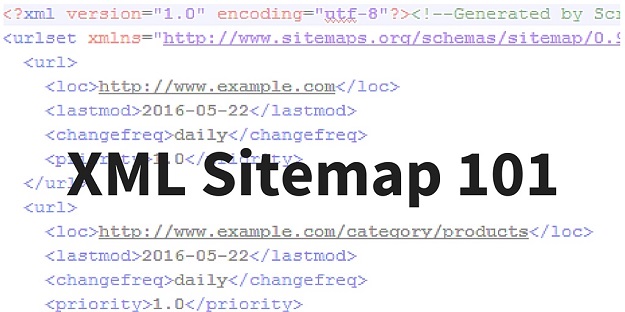Your website will only be as successful as your design. That’s why it’s so important to create an SEO sitemap before you build your actual site. Click here to learn more about the importance of this key function and feature.
Sitemaps continually fly under the radar when it comes to SEO metrics. When in reality, they’re an excellent way to boost your SERPs rank with minimal effort.
But for some reason, no one understands how they work. Today we’re here to pull back the curtain and reveal why you need an SEO sitemap.
Seo Sitemap 101
Long before real-time algorithms and content marketing took SEO by storm websites relied on keywords and links to boost their SERPs rank. And while those methods worked at the time, Google evolved.
The search giant is on an ever-pressing mission to develop the perfect algorithm. Something that returns the most accurate, useful web pages. In the process, SEO techniques come and go based on Google’s flavor of the week.
Though for all the tweaks the basic way Google finds and records websites hasn’t changed. Crawlers still search the internet’s never-ending mass of links, recording information based on both on and off-page signals.
It’s why sitemaps are still so important to any SEO’s arsenal. Links matter and always will matter. Without them, Google has no way of cataloging the internet.
What you include in your sitemap tells Google what links you value, and those you don’t. Confused? Don’t worry, we’re here to help.
Let’s first take a look at what specifically a sitemap does.
Building a Treasure Map
Creating a sitemap is like creating a map to your website. You’re giving Google directions in advance so they don’t get lost on their way. Think of the analogy this way.
Pretend you’re sending someone to some destination with vague directions how to get there. Chances are they’d end up in the right place, and could even draw their own map on the way there. Though they might miss something on the way.
But if you send exploring with a map of your own creation, they’ll not only get there faster, but they’ll also understand the path you’d rather them take and see everything you intended them to see.
Google’s crawler works the same way. When it scours the internet it’s looking for links, and eventually ends up at your website. The crawler then works its way through your link structure, creating its own map based on its chosen path.
Though just because the crawler finds your site doesn’t mean it crawlers then entire thing at once. In fact, it might miss web pages just like the metaphorical person missed something you wanted them to see.
But with a sitemap, the crawler not only takes your set of directions but also sees every web page on your site. And this matter so much because…
So why Does Having the Map Matter?
There are several SEO-centric reasons having a sitemap matters, though it really boils down to manipulation. SEOs can use their sitemap to influence what Google looks for.
Let’s break down websites into two different categories. We’ll call the first “utility pages.” They’re web pages that exist, but that offer users much. They just exist for navigation purposes etc.
The second type we’ll call “high-quality pages.” They’re content pages that administrators want users to see. Often times, they qualify as landing pages.
Now consider that Google looks at an entire website as a determination of quality in relation to the user experience. They want to return helpful content. Utility pages probably rank low on Google’s “usability” scale, while content pages rank higher.
And that’s why building a sitemap matters. The map tells Google to ignore utility pages that would otherwise bring down a website’s overall ranking. Instead, it tells Google to focus on the high-quality pages.
One Last Catch
Like with everything, there’s always a catch. Google doesn’t religiously follow sitemaps. They’re more of a guideline. Think back to the above map example.
Giving someone a map doesn’t mean they’ll follow the instructions perfectly. The same holds true for sitemaps. Web administrators often find that Google’s still indexing pages not included in their sitemap.
To take care of this little problem the sitemap creator adds something called meta robots and “noindex.follow” tags to their utility pages. These tags tell Google not to count incoming links.
If it were a conversion with Google it’d look something like this:
Admin: “Hey Google, this page is pretty useless from a user’s standpoint. Can you just ignore it? Oh, but make sure you’re still checking out the pages that it links to.”
Google: “Cool, I never liked that web page anyway. And by the way, nice high-quality page you’ve got there. I’ll make sure to bump that up in the SERPs. You’re welcome.”
* It’s important to note that noindex.follow tags still allow link juice to flow out from the utility page and into your high-quality pages.
This way Google won’t crawl any utility links that aren’t listed in the sitemap at hand. Once again the real goal is pulling a fast one on Google. Only this time they’re aware of the ruse.
The Important of SEO
While sitemaps represent the underutilized portions of SEO, they’re just the tip of the iceberg. An enormous amount of SEO metrics exist that can help get your website ahead in the SERP rankings.
To help you understand this ever-growing and changing list of metrics we’ve made it our goal to create your new home for the most up-to-date SEO news around. We cover everything from Google updates to new SEO techniques
We want to ensure that you’re getting the very best SEO knowledge that can keep you ahead of the competition and at the top of the SERPs rankings.
So if you liked our article on the importance of an SEO sitemap, stay tuned for more. Let us help you improve your SEO today!


